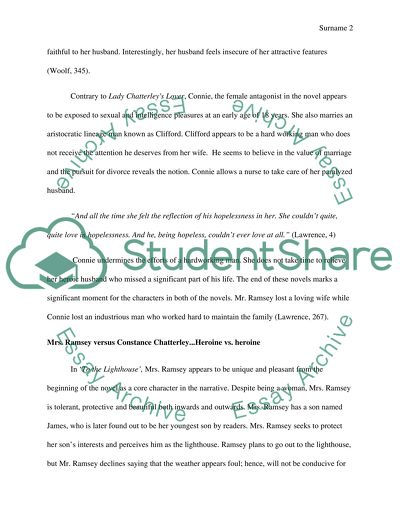Cite this document
(“Mrs. Ramsey To the Lighthouse vs Constance Chatterley Lady Chatterleys Book Report/Review”, n.d.)
Retrieved from https://studentshare.org/literature/1464918-mrs-ramsey-to-the-lighthouse-vs-constance-chatterley-lady-chatterleys-lover-heroine-vs-heroine
Retrieved from https://studentshare.org/literature/1464918-mrs-ramsey-to-the-lighthouse-vs-constance-chatterley-lady-chatterleys-lover-heroine-vs-heroine
(Mrs. Ramsey To the Lighthouse Vs Constance Chatterley Lady Chatterleys Book Report/Review)
https://studentshare.org/literature/1464918-mrs-ramsey-to-the-lighthouse-vs-constance-chatterley-lady-chatterleys-lover-heroine-vs-heroine.
https://studentshare.org/literature/1464918-mrs-ramsey-to-the-lighthouse-vs-constance-chatterley-lady-chatterleys-lover-heroine-vs-heroine.
“Mrs. Ramsey To the Lighthouse Vs Constance Chatterley Lady Chatterleys Book Report/Review”, n.d. https://studentshare.org/literature/1464918-mrs-ramsey-to-the-lighthouse-vs-constance-chatterley-lady-chatterleys-lover-heroine-vs-heroine.


